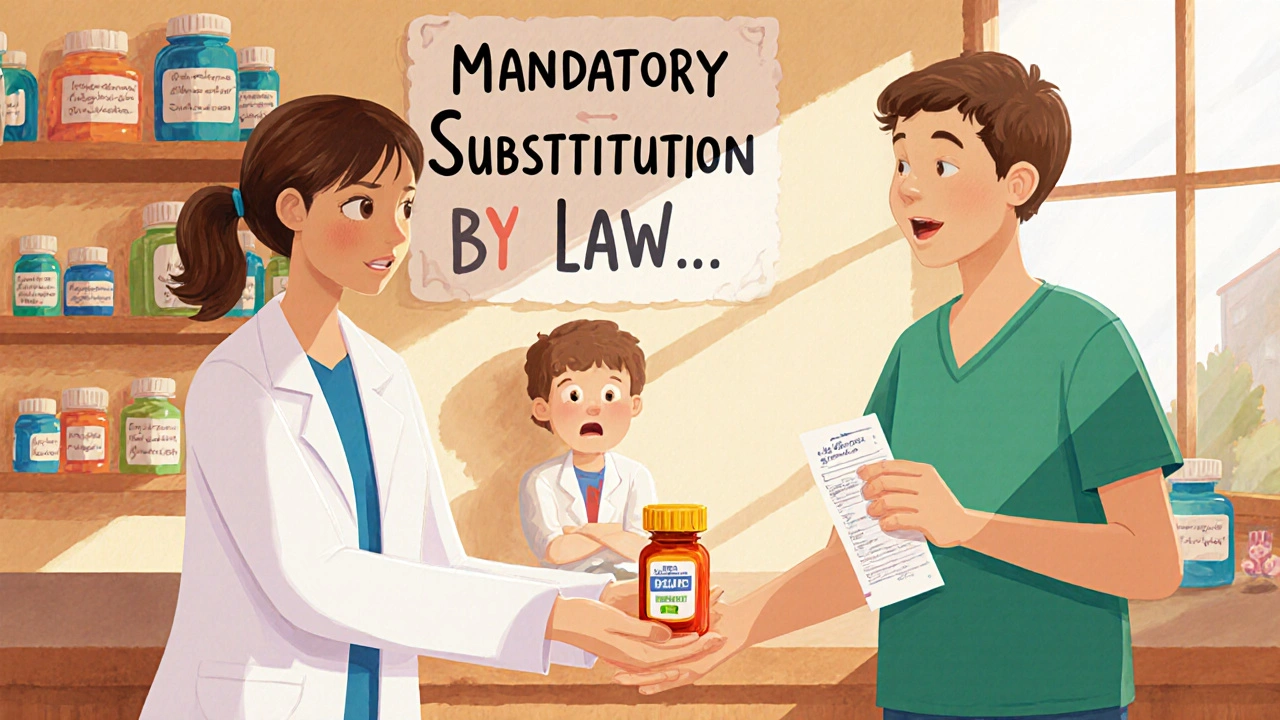Permissive Substitution: What It Means for Your Generic Drug Coverage
When your pharmacy hands you a different pill than what your doctor wrote, it’s not a mistake—it’s permissive substitution, a practice where pharmacists can replace a brand-name drug with a generic version unless the prescriber specifically forbids it. Also known as generic substitution, it’s one of the quietest ways the U.S. healthcare system saves billions every year. This isn’t about cutting corners. It’s about making sure you get the same clinical result at a fraction of the cost—something your insurer actively encourages.
Behind every swap is a P&T committee, a group of doctors and pharmacists who review drugs for safety, effectiveness, and cost before approving them for insurance coverage. These committees decide which generics make it onto your plan’s formulary—and which ones get pushed to the top tier with the lowest copay. If a generic passes their review, pharmacists are allowed to substitute it automatically. That’s insurance formularies, lists of approved medications that insurers use to control spending and steer patients toward cost-effective options in action. You might not see the paperwork, but these lists shape what’s on your shelf.
Not all substitutions are automatic. Some doctors write "dispense as written" or "no substitution" on the prescription. That’s their right. But if they don’t, the system defaults to the cheaper option. Why? Because generics work the same. The FDA requires them to match the brand in active ingredients, strength, dosage, and how they’re absorbed. The only differences are in color, shape, or filler ingredients—none of which affect how the drug works in your body.
What you might not realize is that this system doesn’t just save money—it affects access. A drug that costs $300 a month as a brand might be $10 as a generic. Without permissive substitution, many people simply wouldn’t fill their prescriptions. That’s why insurers push for it. And why pharmacies are trained to swap unless told not to.
But it’s not perfect. Sometimes, patients notice a change in how they feel—even if the science says it shouldn’t matter. That’s when you need to talk to your doctor or pharmacist. Maybe your body reacts to a different filler. Maybe you’ve been on the brand so long, your mind associates it with relief. Those concerns matter. But they shouldn’t be the default reason to pay more.
What you’ll find in the posts below is a real-world look at how this plays out: how insurers pick generics, why some drugs get denied, what happens when a cheaper alternative isn’t covered, and how patients navigate these choices. From heart failure meds to diabetes drugs, you’ll see how permissive substitution shapes what ends up in your medicine cabinet—and what you pay for it.
Mandatory vs Permissive Substitution: How State Laws Shape Generic Drug Access
- Beata Staszkow
- |
- |
- 12
Mandatory and permissive substitution laws determine whether pharmacists must or can switch brand-name drugs to generics. These state-level rules impact drug costs, adherence, and patient safety - with big differences across the U.S.
View more
